Notice of cancellation of the special Exhibition “GION FESTIVAL in Kyoto”
The special exhibition “GION FESTIVAL in Kyoto” has been cancelled, as part of the effort to contain the spread of COVID-19.
We appreciate your kind understanding and cooperation.
Known as a leading festival of both Kyoto and the whole country, the Gion Festival has survived to this day after centuries evolving along with the history of Kyoto. The sumptuous Yamahoko floats decorated with fine arts and crafts from Japan, East Asia, the Middle East, and Europe are admired as “moving museums,” and are designated as National Important Tangible Folk Cultural Properties in addition to being inscribed on UNESCO’s Representative List of the Intangible Cultural Heritage of Humanity. The Gion Festival is a quintessential urban Japanese festival. Urban festivals generate many distinctive cultural traditions as they develop in close association with the city’s inhabitants.
General Information
- Period:
- 24 March – 17 May, 2020
- Venue:
- The fourth and third floors
- Hours:
- 10:00 – 18:00
Fridays until 19:30
*Last entry 30 minutes before closing
- Closed:
- Mondays (except 4 May) and 7 May
- Admission:
- Adult 1,500 yen (1,300 yen)
University Student / High School Student 1,100 yen (900 yen)
Junior High School Student / Primary School Student 500 yen (300 yen)
*Prices shown in ( ) indicate advance and group (more than 20 persons) discount tickets.
*Advance ticket available till 23 March.
*Tickets are available at The Museum of Kyoto, Lawson Ticket(L-Code 53595), Ticket PIA(P-Code 685-018) and ticket agencies
*Persons with disabilities are admitted free with one accompanying person each.
Please present Disabled Person’s Notebook or similar identification.
THE EXHIBITION
Prologue – The Float Procession in Paintings –
A pair of folding screens depicting the whole of the Gion Festival in the Edo period
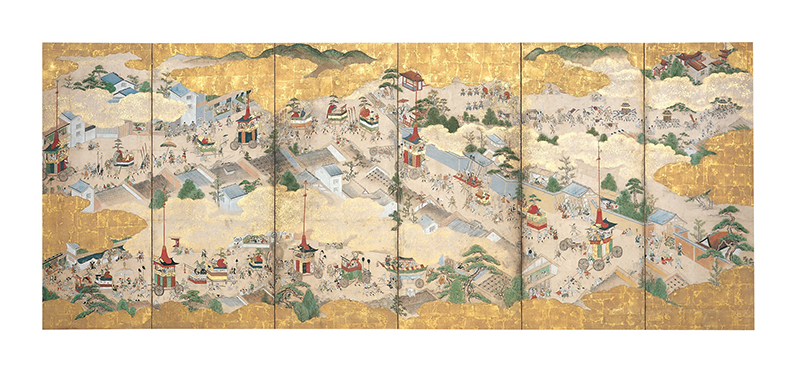 Folding screen depicting the Gion Festival(right wing), The late 17th century, The Hosomi Museum
Folding screen depicting the Gion Festival(right wing), The late 17th century, The Hosomi Museum
A picture scroll depicting all of the floats that participated in one year’s the Gion Festival at the end
 Picture scroll depicting the Gion Festival painted by Reizei Tamechika, 1848, The Kokugakuin University Museum
Picture scroll depicting the Gion Festival painted by Reizei Tamechika, 1848, The Kokugakuin University Museum
Chapter 1 -The Gion Festival and Float Procession in Records –
A drawing showing the figure of Kita-Kannon-yama before its grand roof was attached
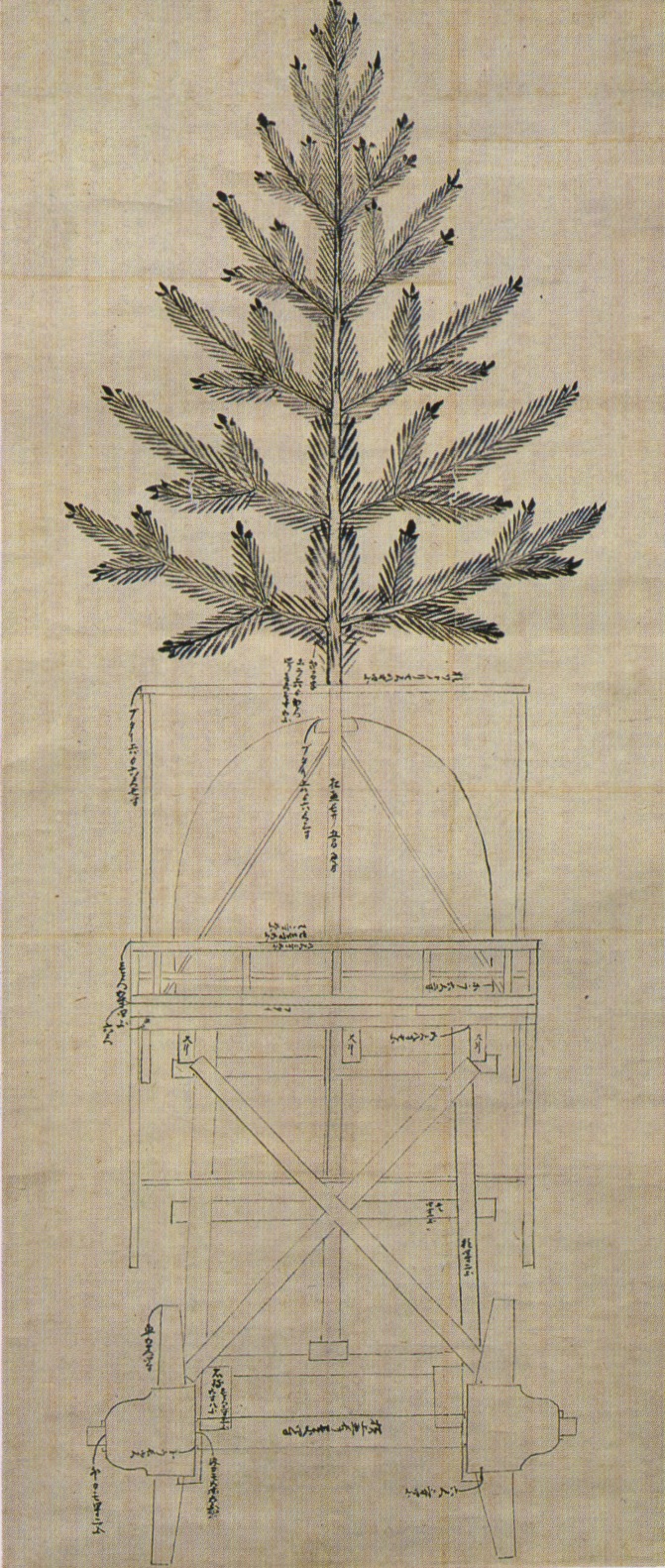 Picture of the Kita-Kannon-yama float
Picture of the Kita-Kannon-yama float
The mid Edo period
Kita-kannon YamaA painting depicting the façade of Ofune-hoko in the Edo period
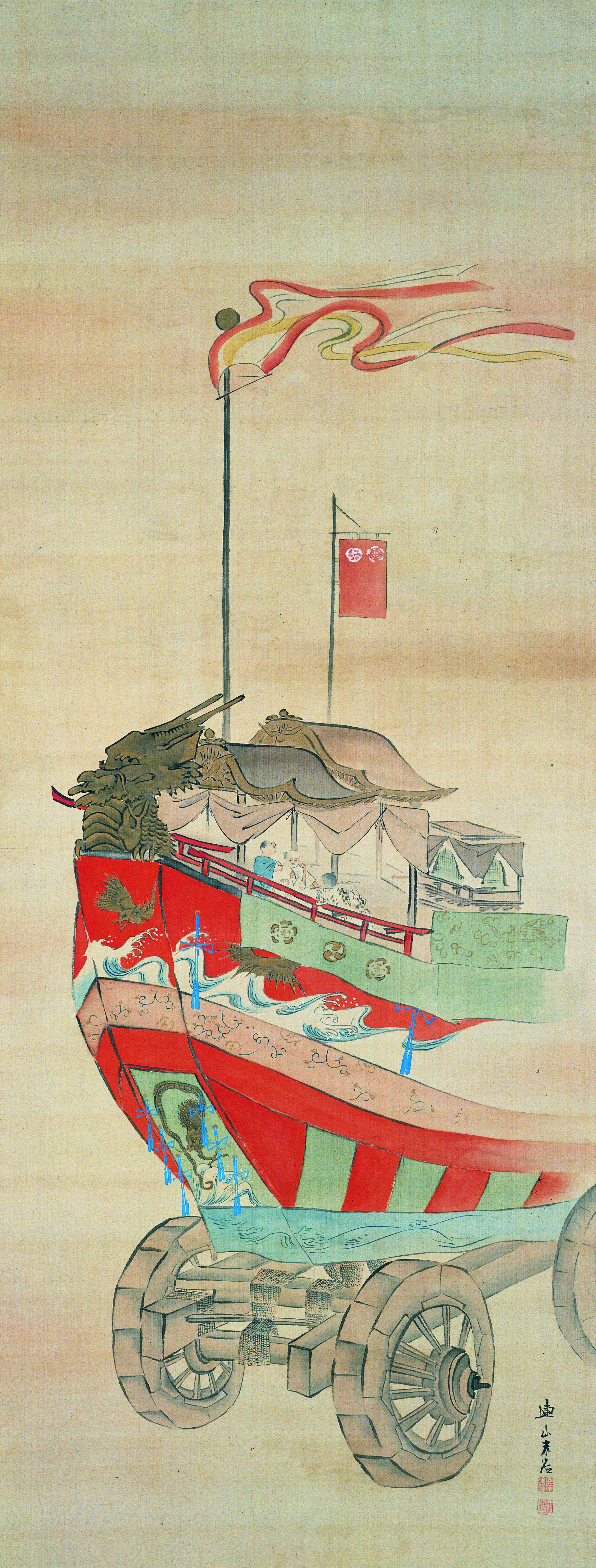 Picture of the Ofune-hoko float by Okamoto Toyohiko
Picture of the Ofune-hoko float by Okamoto Toyohiko
The late Edo period
Ofune Hoko
A tourist guidebook series issued in the Edo period that included a description of the Gion Festival
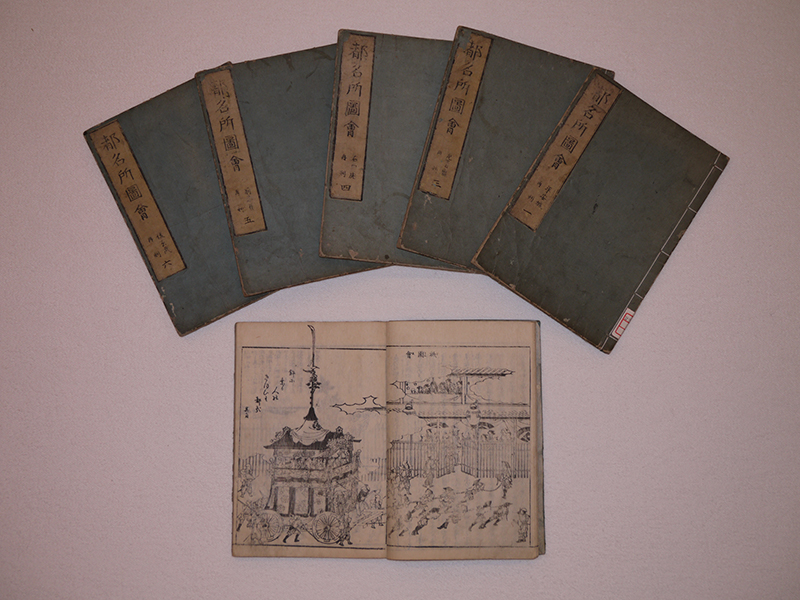
Miyako Meisho Zue (“Pictures of notable sites in Kyoto”)
1780
Kyoto Prefecture
Chapter 2 – Decorating the Floats: The World of Decorative Metal Fittings –
A set of armor from the Muromachi period, worn by the object of worship of Jomyo-yama
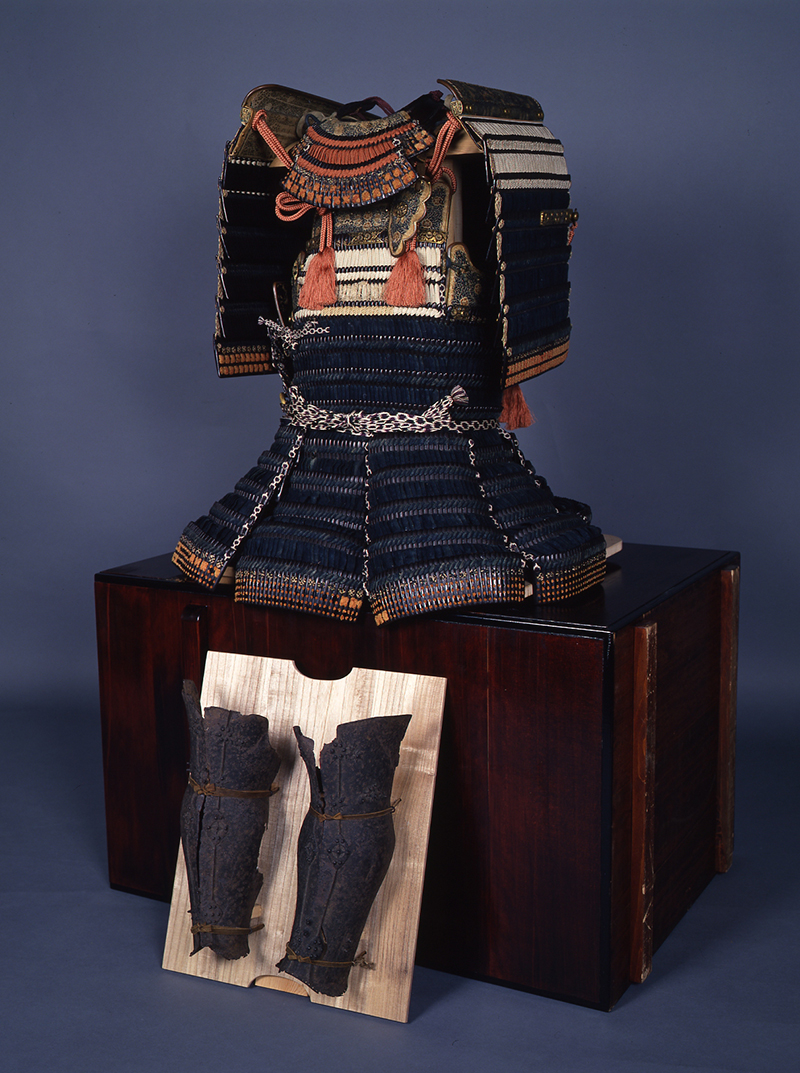
Do-maru armor of black leather with white lines on the shoulder
Important cultural property
Muromachi period
Jomyo-yama
Decorative metal fittings on the corners of Niwatori-hoko, featuring eight precious fruits valued from ancient times
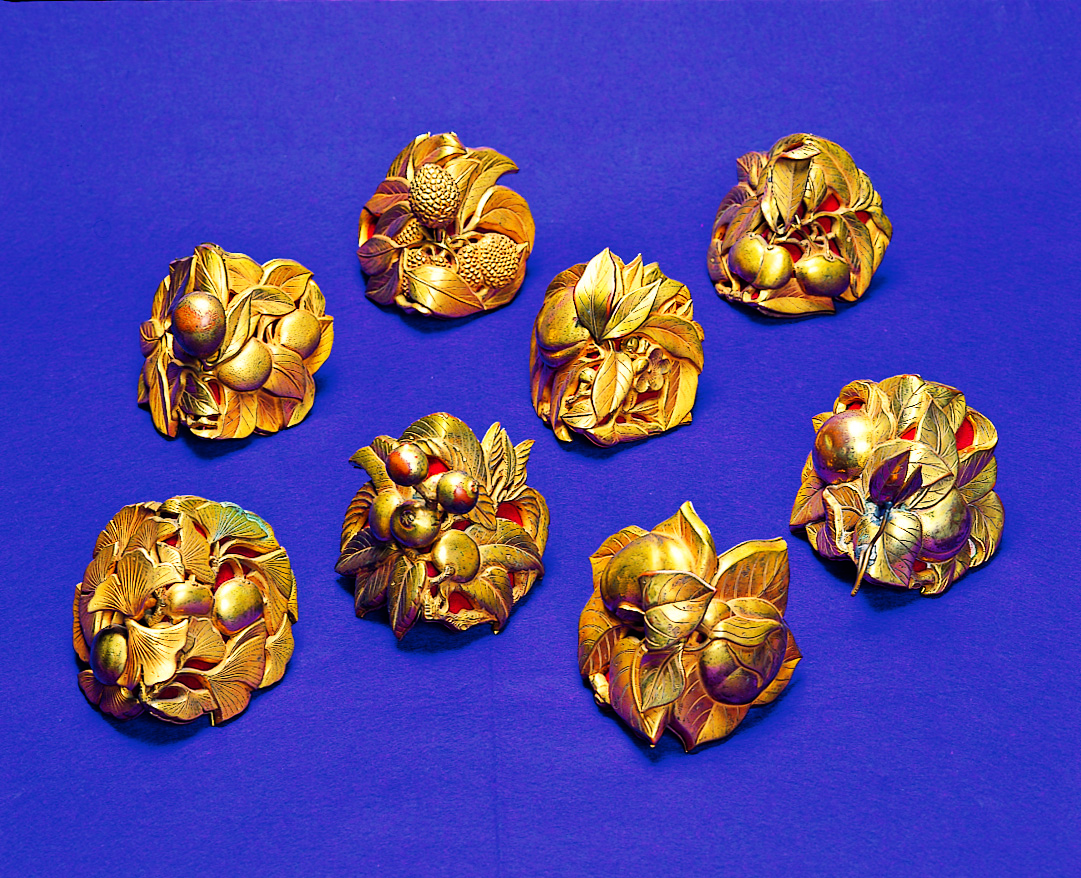
Decorative metal fittings on the corners
Important tangible folk-cultural property
1825
Niwatori-hoko
The oar held by Tsukuyomi (the goddess of the moon) enshrined in the Tennoza chair of Tsuki-hoko and Ornament on top of the spear of Tsuki-hoko, with the engraving of the year, Genki 4 (1573)
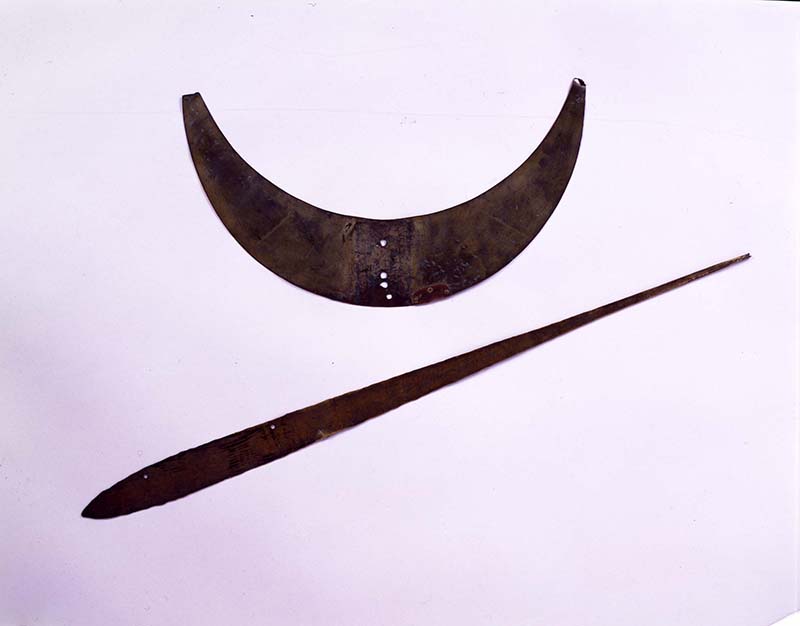
Oar created by Okazariya Kan’emon / Spear-top ornament created by Onishi-ya Kan’emon
1573
Tsuki-hoko
Decorative metal fittings on the corners of Hakuga-yama, featuring delicate openwork of chrysanthemum flowers
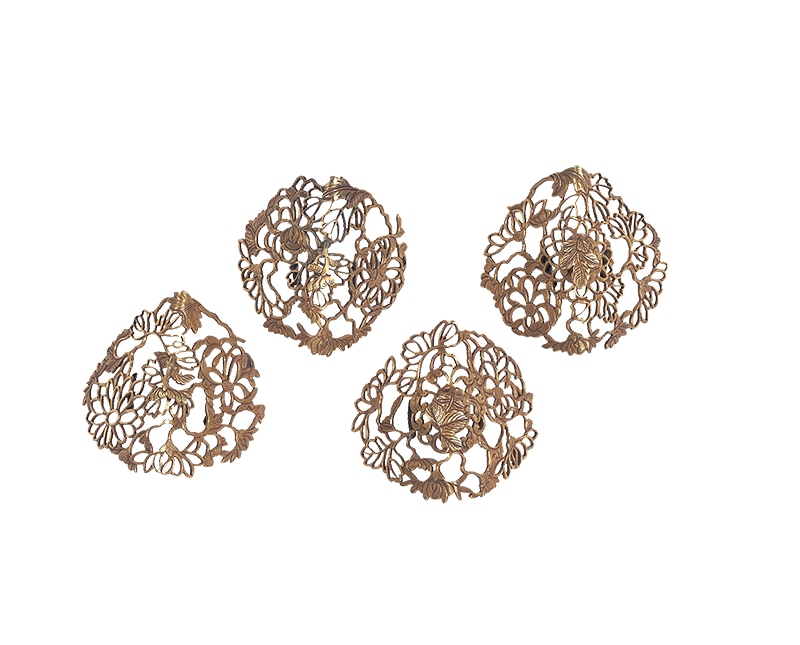
Decorative metal fittings on the corners Significant tangible folk cultural asset
1853Hakuga-yama
Chapter 3 – Decorating the Floats: The Beauty of the Decorative Fabrics –
Rearmost brocade of Niwatori-hoko, woven in Belgium in the 16th century and then brought to Japan
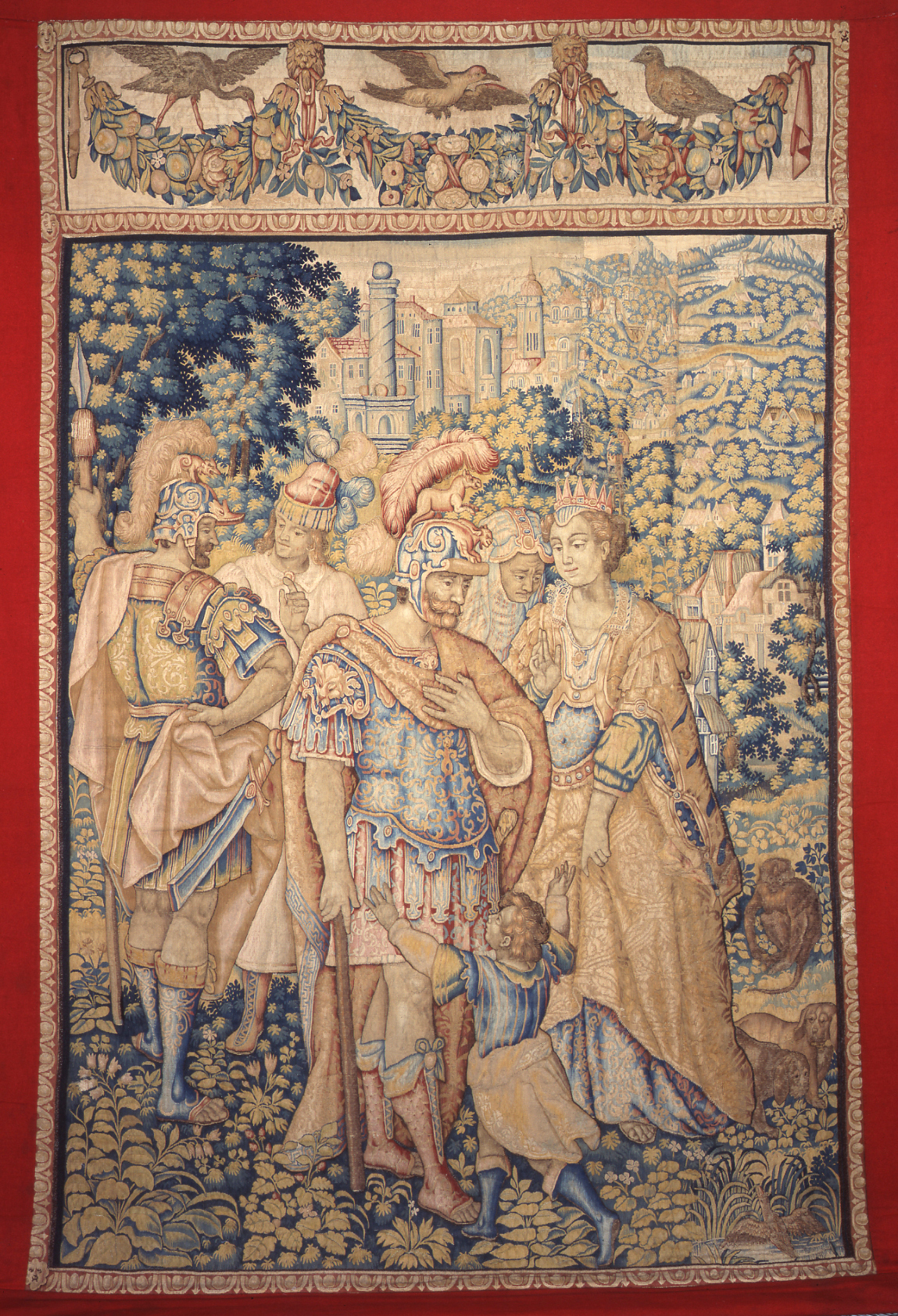 Decorative woolen fabric on the Niwatori-hoko floatImportant cultural propertyThe 16th centuryNiwatori-hoko
Decorative woolen fabric on the Niwatori-hoko floatImportant cultural propertyThe 16th centuryNiwatori-hokoA tapestry which both Niwatori-hoko of the Gion Festival and another float of the Nagahama Festival have users their rearmost brocades.
A tapestry that once was part of the rearmost brocade of Niwatori-hoko, later brought to Nagahama in Shiga Prefecture
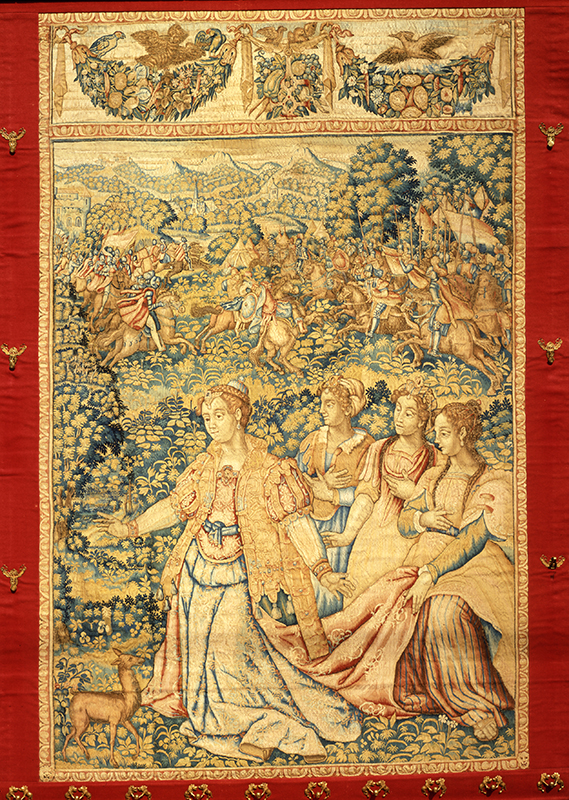 Decorative woolen fabric for the Ho-o-zan float of the Nagahama Festival
Decorative woolen fabric for the Ho-o-zan float of the Nagahama Festival
Important cultural property
The 16th century
Ho-o-zan
A European tapestry decorating the façade of Koi-yama
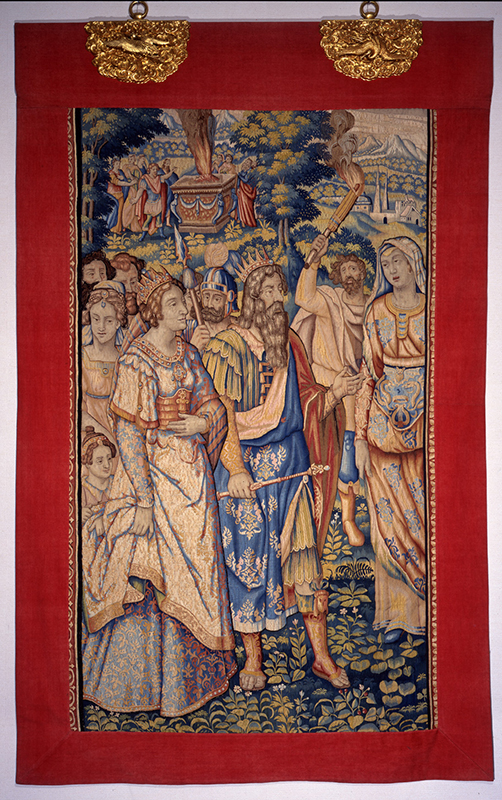 Decorative woolen fabric for the Koi-yama float (Rearmost brocade)
Decorative woolen fabric for the Koi-yama float (Rearmost brocade)
Important cultural property
The 16th century
Koi-yama
Design of the brocade decorating the façade of Hosho-yama
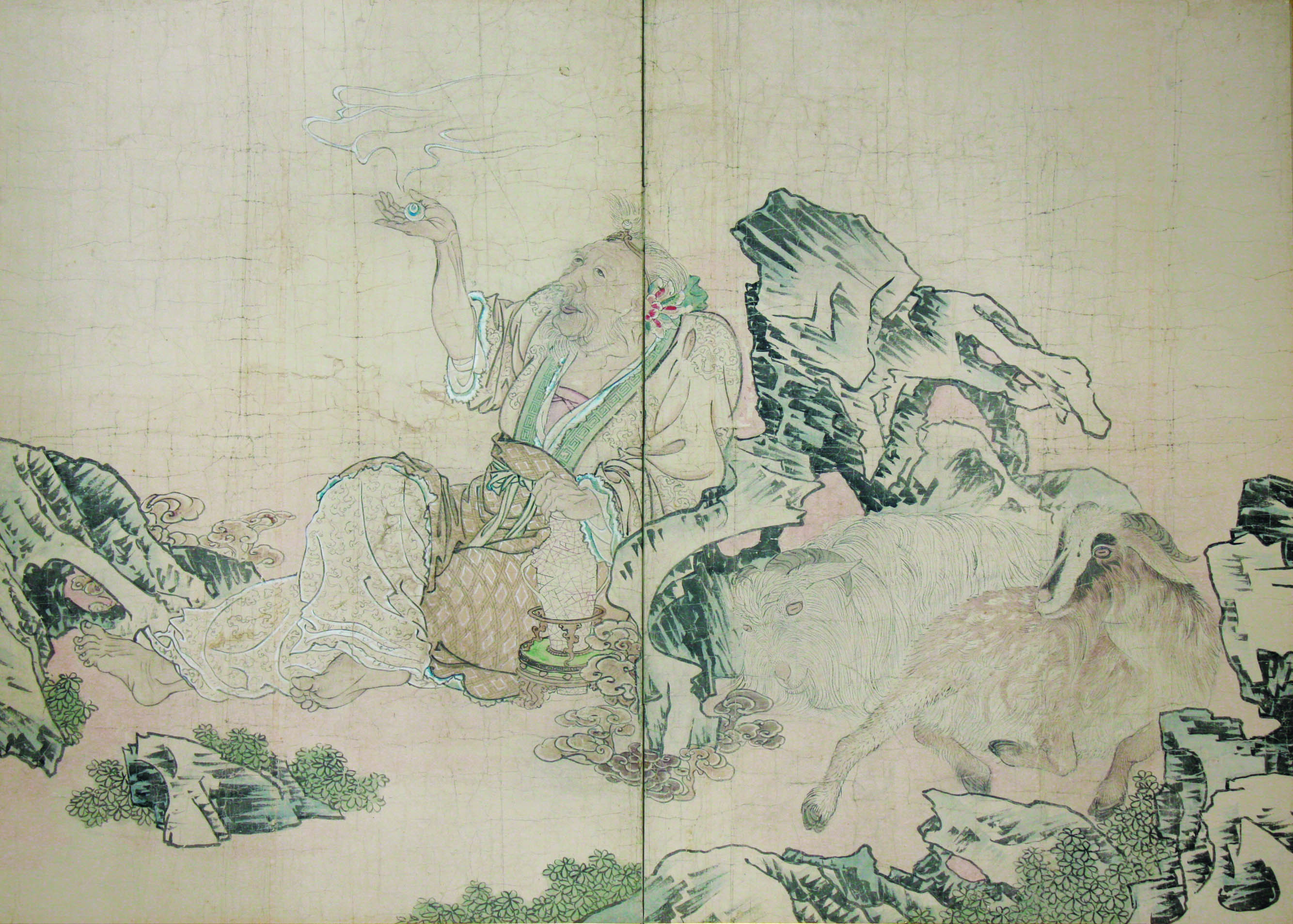 Folding screen (Painted by Maruyama Okyo)
Folding screen (Painted by Maruyama Okyo)
Cultural property designated by Kyoto City
The 18th century
Hosho-yama>A brocade decorating the façade of Hosho-yama, drafted by Maruyama Okyo
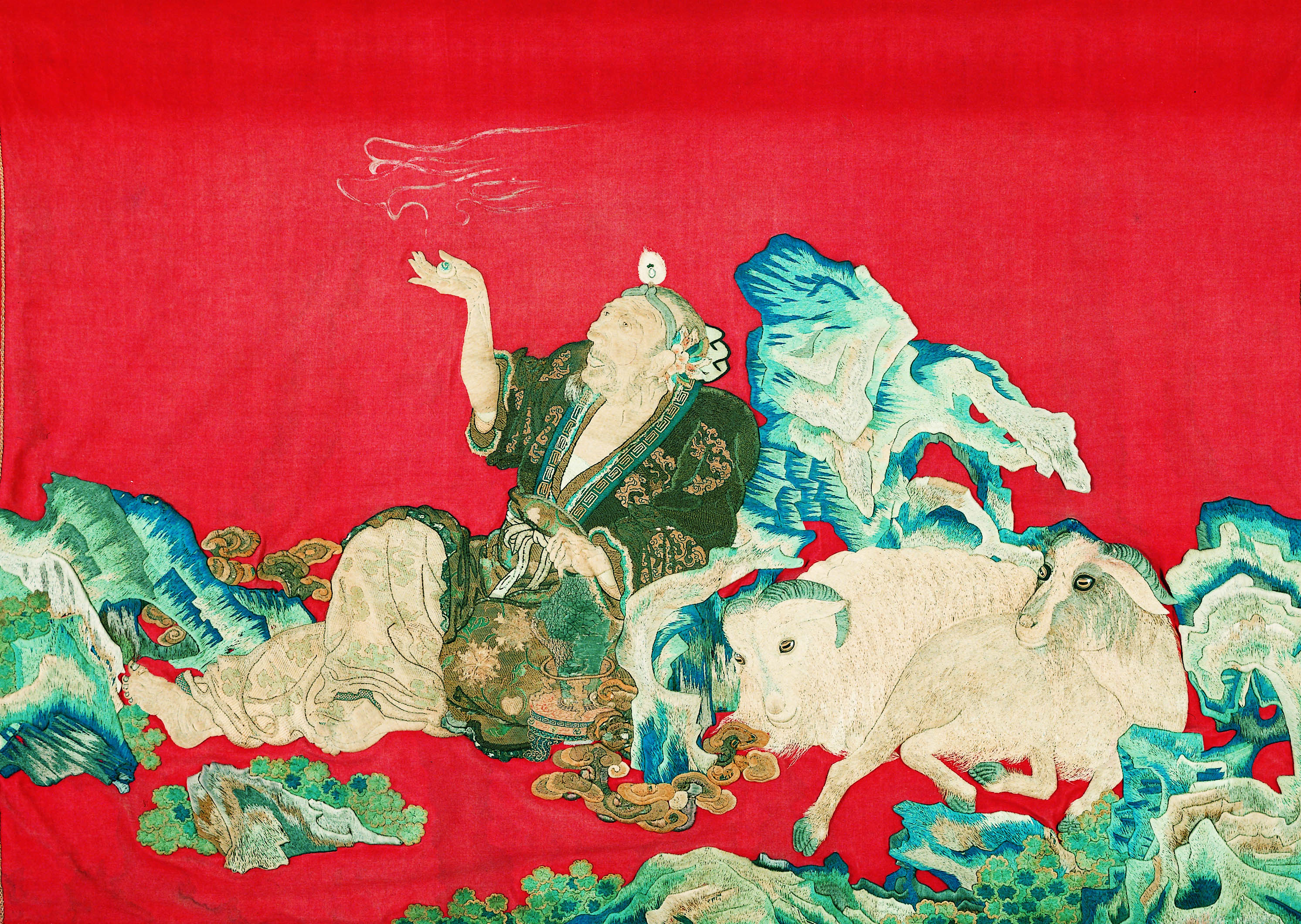 Front brocade
Front brocade
1773
Hosho-yama
第四章 神格化される祇園祭の山鉾
The oldest existing costume in any yamahoko-owner-town
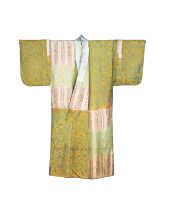 Kosode robe
Kosode robe
Important cultural property
1589
Ashikari-yamaA costume worn by the Guo Ju (Kakkyo) statue, the object of worship of Kakkyo-yama
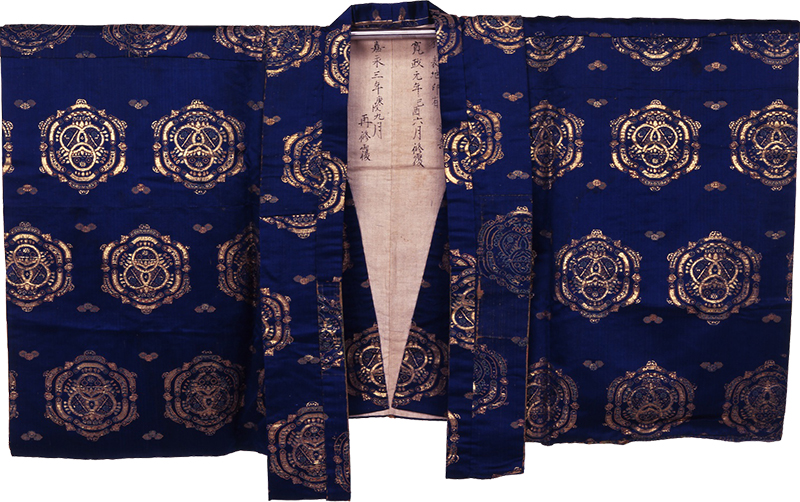 Former costume for the object of worship, Kakkyo
Former costume for the object of worship, Kakkyo
1641
Kakkyo-yama
Ceiling boards on Fune-hoko featuring colorful paintings of flowers and plants in round shapes
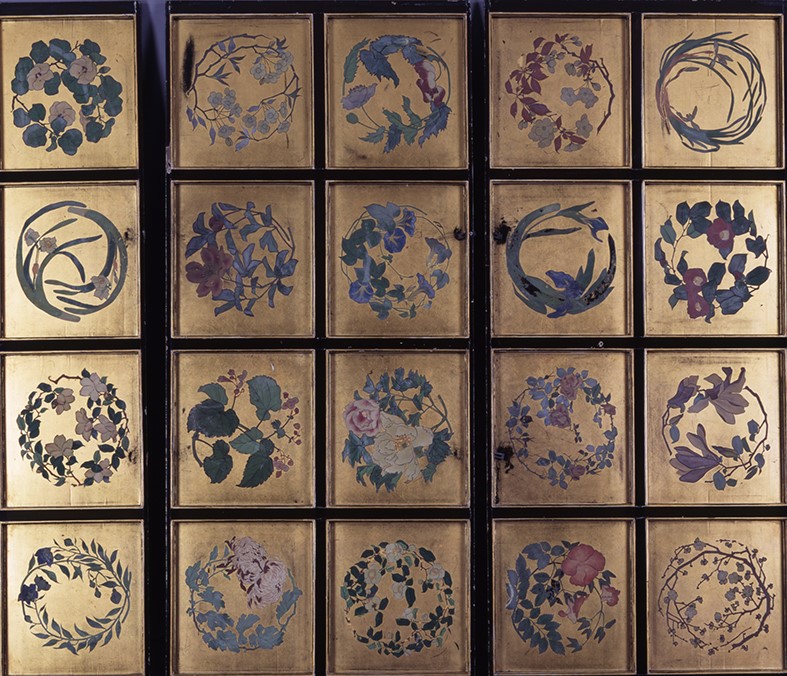 Coffered ceiling of a houseboat on Fune-hoko
Coffered ceiling of a houseboat on Fune-hoko
Significant tangible folk cultural asset
1834
Fune-hokoThe costume worn by a chigo (sacred boy) on Naginata-hoko, the symbol of the Gion Festival
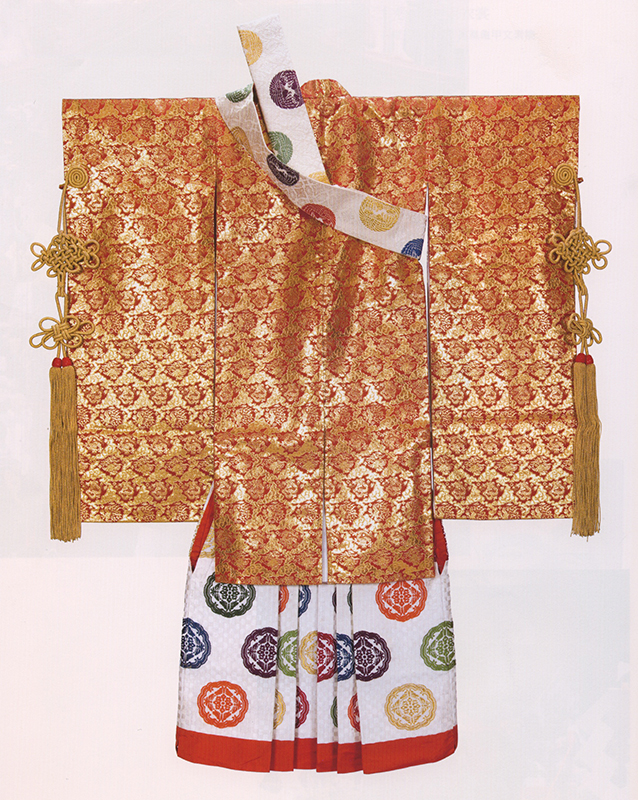 Costume worn by a chigo (sacred boy) on the Naginata-hoko float
Costume worn by a chigo (sacred boy) on the Naginata-hoko float
Significant tangible folk cultural asset
Currently being used
Naginata-hoko
Chapter 5 – Gion Festival Floats in the Wave of Modernization –
A “mantis” that once was mounted on Toro-yama
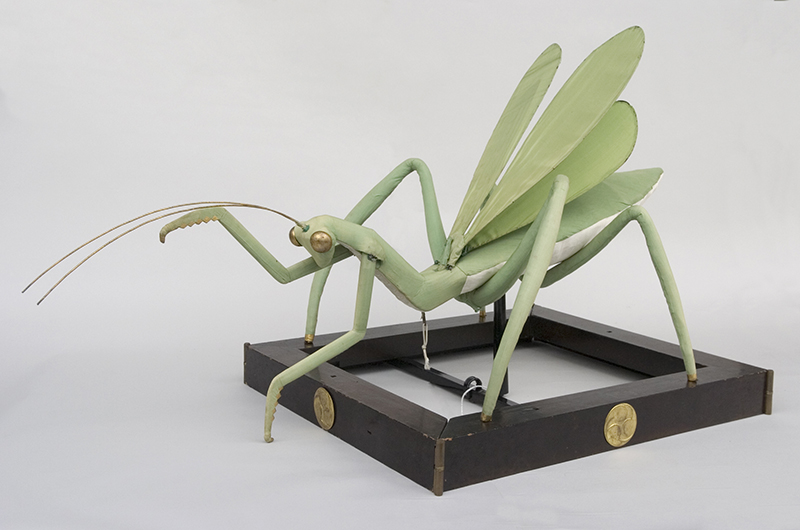 Formerly-used decorative artifact “Mantis”
Formerly-used decorative artifact “Mantis”
Cultural property designated by Kyoto City
The mid 19th century
Toro-yama
Paintings on the backside of the eaves of the Iwato-yama’s grand roof, by Imao Keinen

 Paintings on the backside of the eaves – Seasonal flowers on gold background, by Imao Keinen
Paintings on the backside of the eaves – Seasonal flowers on gold background, by Imao Keinen
Significant tangible folk cultural asset
1918
Iwato-yama
Rearmost brocade of Moso-yama, painted by Takeuchi Seiho’s own hand
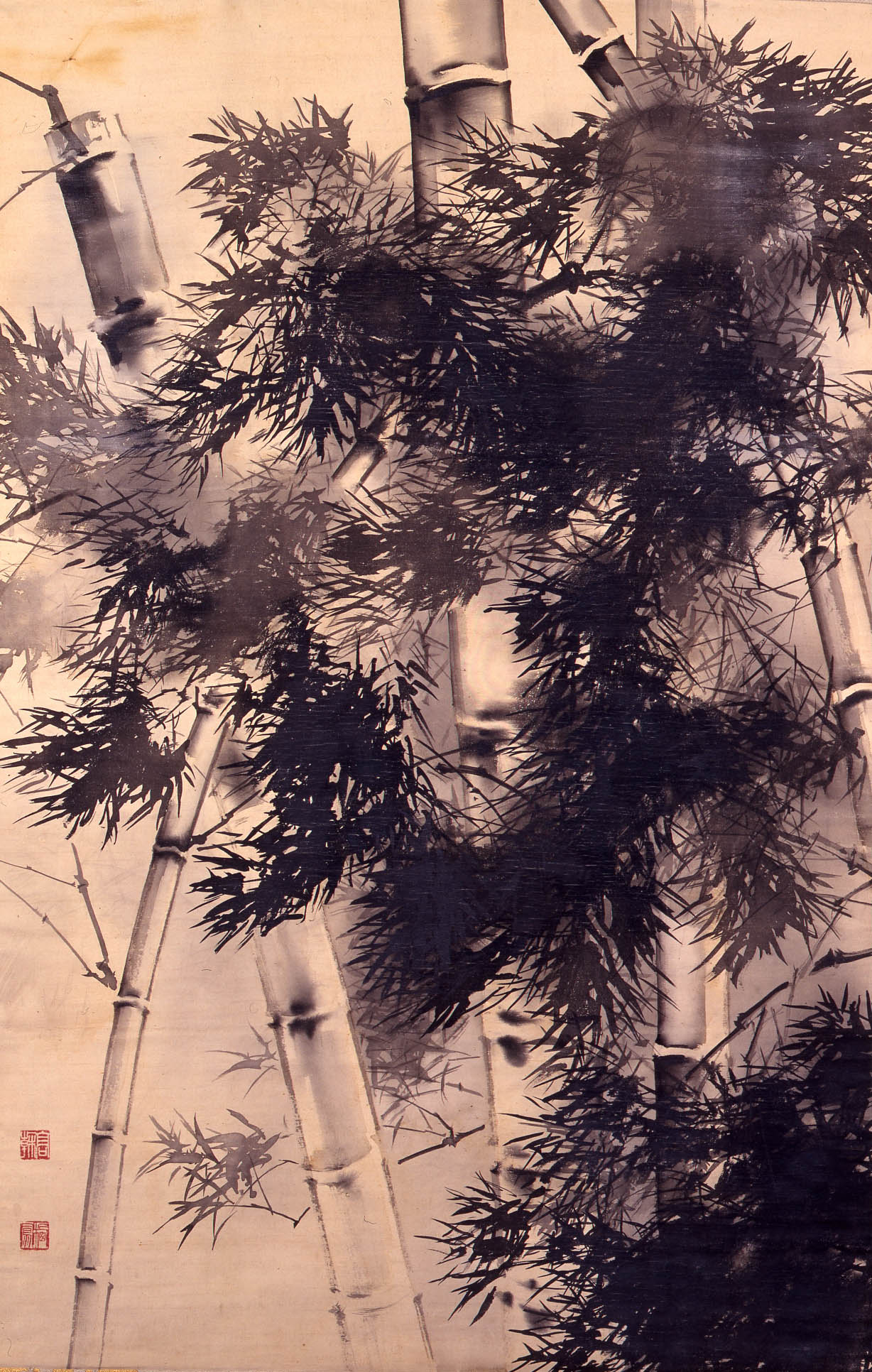 Rearmost brocade by Takeuchi SeihoSignificant tangible folk cultural asset
Rearmost brocade by Takeuchi SeihoSignificant tangible folk cultural asset
1940
Moso-yamaOrnament on top of the spear of Kikusui-hoko, featuring a chrysanthemum flower with 16 petals
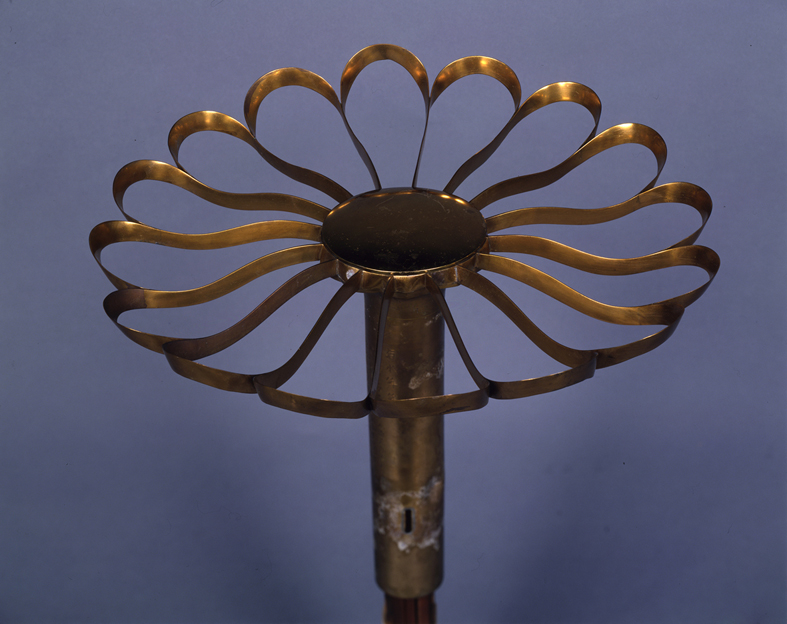 Spear-top ornament by Kobayashi Shomin
Spear-top ornament by Kobayashi Shomin
1952Kikusui-hoko
Epilogue – Moving Forward –
Detailed picture of the three idols on Taka-yama, created in 1831
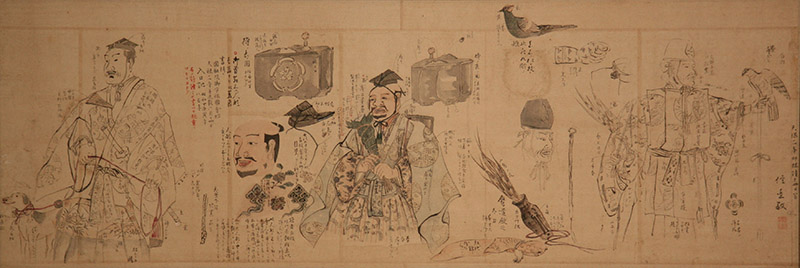 Picture of the sacred idols 1831 Taka-yama
Picture of the sacred idols 1831 Taka-yama
Access to the Museum of Kyoto
・You can download a flyer
(PDF 627KB)

 Folding screen depicting the Gion Festival(right wing), The late 17th century, The Hosomi Museum
Folding screen depicting the Gion Festival(right wing), The late 17th century, The Hosomi Museum Picture scroll depicting the Gion Festival painted by Reizei Tamechika, 1848, The Kokugakuin University Museum
Picture scroll depicting the Gion Festival painted by Reizei Tamechika, 1848, The Kokugakuin University Museum Picture of the Kita-Kannon-yama float
Picture of the Kita-Kannon-yama float Picture of the Ofune-hoko float by Okamoto Toyohiko
Picture of the Ofune-hoko float by Okamoto Toyohiko Miyako Meisho Zue (“Pictures of notable sites in Kyoto”)
Miyako Meisho Zue (“Pictures of notable sites in Kyoto”) Do-maru armor of black leather with white lines on the shoulder
Do-maru armor of black leather with white lines on the shoulder Decorative metal fittings on the corners
Decorative metal fittings on the corners Oar created by Okazariya Kan’emon / Spear-top ornament created by Onishi-ya Kan’emon
Oar created by Okazariya Kan’emon / Spear-top ornament created by Onishi-ya Kan’emon Decorative metal fittings on the corners Significant tangible folk cultural asset
Decorative metal fittings on the corners Significant tangible folk cultural asset Decorative woolen fabric on the Niwatori-hoko floatImportant cultural propertyThe 16th centuryNiwatori-hoko
Decorative woolen fabric on the Niwatori-hoko floatImportant cultural propertyThe 16th centuryNiwatori-hoko Decorative woolen fabric for the Ho-o-zan float of the Nagahama Festival
Decorative woolen fabric for the Ho-o-zan float of the Nagahama Festival Decorative woolen fabric for the Koi-yama float (Rearmost brocade)
Decorative woolen fabric for the Koi-yama float (Rearmost brocade) Folding screen (Painted by Maruyama Okyo)
Folding screen (Painted by Maruyama Okyo) Front brocade
Front brocade Kosode robe
Kosode robe Former costume for the object of worship, Kakkyo
Former costume for the object of worship, Kakkyo Coffered ceiling of a houseboat on Fune-hoko
Coffered ceiling of a houseboat on Fune-hoko Costume worn by a chigo (sacred boy) on the Naginata-hoko float
Costume worn by a chigo (sacred boy) on the Naginata-hoko float Formerly-used decorative artifact “Mantis”
Formerly-used decorative artifact “Mantis”
 Paintings on the backside of the eaves – Seasonal flowers on gold background, by Imao Keinen
Paintings on the backside of the eaves – Seasonal flowers on gold background, by Imao Keinen Rearmost brocade by Takeuchi SeihoSignificant tangible folk cultural asset
Rearmost brocade by Takeuchi SeihoSignificant tangible folk cultural asset Spear-top ornament by Kobayashi Shomin
Spear-top ornament by Kobayashi Shomin Picture of the sacred idols 1831 Taka-yama
Picture of the sacred idols 1831 Taka-yama